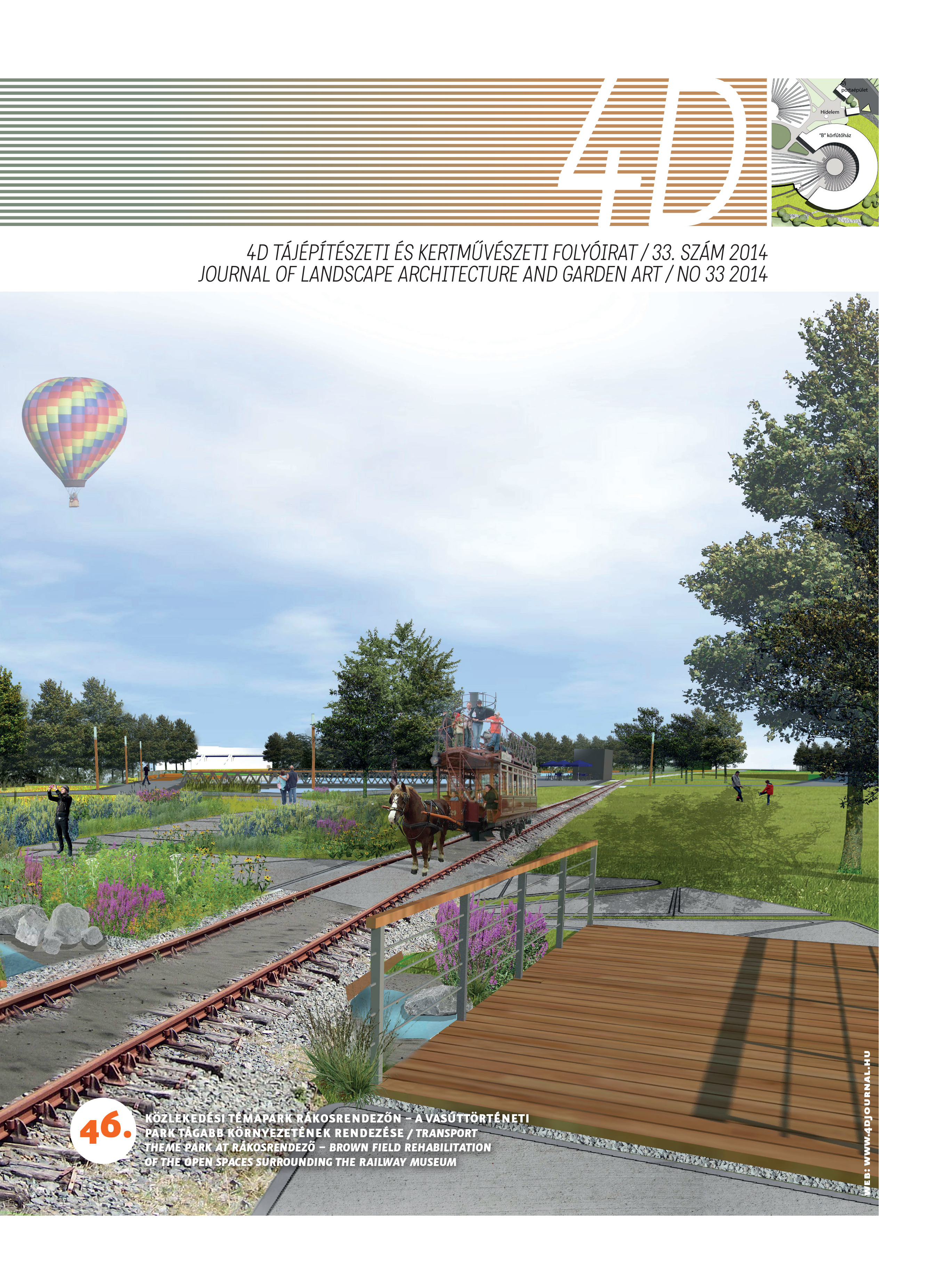The City Park's 200 years - changes in spatial structure and park use in the life of an urban park
Keywords:
Urban parksAbstract
Urban parks have been changing continuously during their centurylong history, depending on the nature of their social mandate, the changes in garden art and the varieties of forms, the economic context, the general behavioural norms as well as usage needs and expectations. The visiting of the parks, their use, the recreational habits vary as well according to the different periods and regions. But are there any eternal, unchanging values in the public welfare services urban parks offer? In today’s rushing, technicized and digital world, can the mentality that led to the birth of the public park movement at the end of the 18th century be considered a value? The idea born in the grip of Embourgeoisement, the quick urban development, the industrial revolution, the deteriorating living conditions and the quality of the environment: The Hirschfeld concept,2 aiming to raise the urban population and provide it with the luxury of aristocratic parks found listening ears everywhere in Europe. Public gardens (Volksgarten), urban parks and in general urban green and open spaces – with their development history of over two centuries – are fundamental criteria of a liveable city.
References
A 2013. évi CCXLII. Tv. a Városliget megújításáról és fejlesztéséről (2013.XII.23)
Sckell, Friedrich Ludwig von: Beiträge zur Bildenden Gartenkunst. München, 1818;
Bugár-Mészáros Károly: A két pesti körönd története. Örökség. 2008.10.sz. p.5.
C.L. Hirschfeld: Theory der Gartenkunst. In: Heinrich Nebbien: Ungarns Folksgarten der Königlichen Frey-Stadt Pesth (1816). Herausgegeben und bearbetet von Dorothee Nehring. Veröffentlichungen des FinnischUngarischen Seminars an der Universität München. München 1981
Heinrich Nebbien: Ungarns Folksgarten der Königlichen Frey-Stadt Pesth (1816) Heraugegeben und bearbetet von Dorothee Nehring; Veröffentlichungen des Finnisch-Ungarischen Seminars an der Universität München, München 1981
Nehring, Dorothee: The landscape architect, Christian Heinrich Nebbien, and his design for the Municpal Park in Budapest. Journal of Garden History, vol.5. no.3. p.261
Pückler-Muskau, Hermann von herceg: Andeutungen über Landschaftsgärtnerei, 1834.
Radó Dezső: Budapesti parkok és terek. Magyar Nemzeti Galéria, Budapest. 1985 p.25.
Downloads
Published
Issue
Section
License
Copyright (c) 2024 Szilágyi Kinga, Kanczlerné Veréb Mária

This work is licensed under a Creative Commons Attribution-NonCommercial-NoDerivatives 4.0 International License.
A folyóirat Open Access (Gold). Cikkeire a Creative Commons 4.0 standard licenc alábbi típusa vonatkozik: CC-BY-NC-ND-4.0. Ennek értelmében a mű szabadon másolható, terjeszthető, bemutatható és előadható, azonban nem használható fel kereskedelmi célokra (NC), továbbá nem módosítható és nem készíthető belőle átdolgozás, származékos mű (ND). A licenc alapján a szerző vagy a jogosult által meghatározott módon fel kell tüntetni a szerző nevét és a szerzői mű címét (BY).



